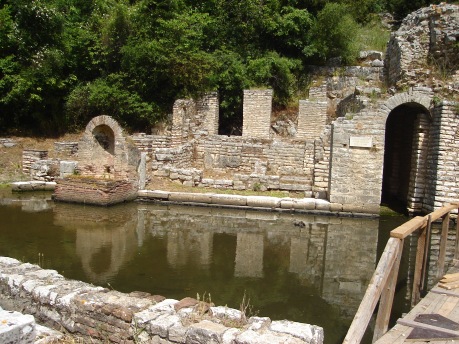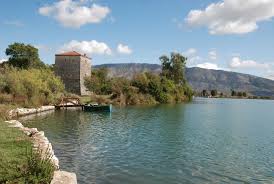At the entrance to the town is a large statue of Ali Pasha Tepelena, Governor of Southern Albania from 1788 - 1822.
His reputation made Lord Byron curious to meet him. In 1809, Byron and his friend John Cam Hobhouse, travelled up to Tepelena and stayed as guests of the Pasha for a while.
They were received in the mighty castle, which was partly rebuilt and fortified by Ali Pasha. It overlooks the river valley, controlling all approaches and offering splendid views.
The main square in front of the castle is now called Lord Byron Square
- Sheshi Lord Bajron, with a large plaque showing the poet in Albanian dress.
In a letter to his mother, dated November, 1809, Byron wrote a description of his host:
His Highness is sixty years old, very fat and not tall, but with a fine face, light blue eyes and a white beard, his manner is very kind and at the same time he possesses that dignity which I find universal amongst the Turks. He has the appearance of anything but his real character, for he is a remorseless tyrant, guilty of the most horrible cruelties, very brave and so good a general, that they call him the Mahometan Buonaparte. Napoleon has twice offered to make him King of Epirus, but he prefers the English interest and abhors the French as he himself told me. He is of so much consequence that he is much courted by both, the Albanians being the most warlike subjects of the Sultan, though Ali is only nominally dependent on the Porte. He has been a mighty warrior, but is as barbarous as he is successful, roasting rebels etc.








